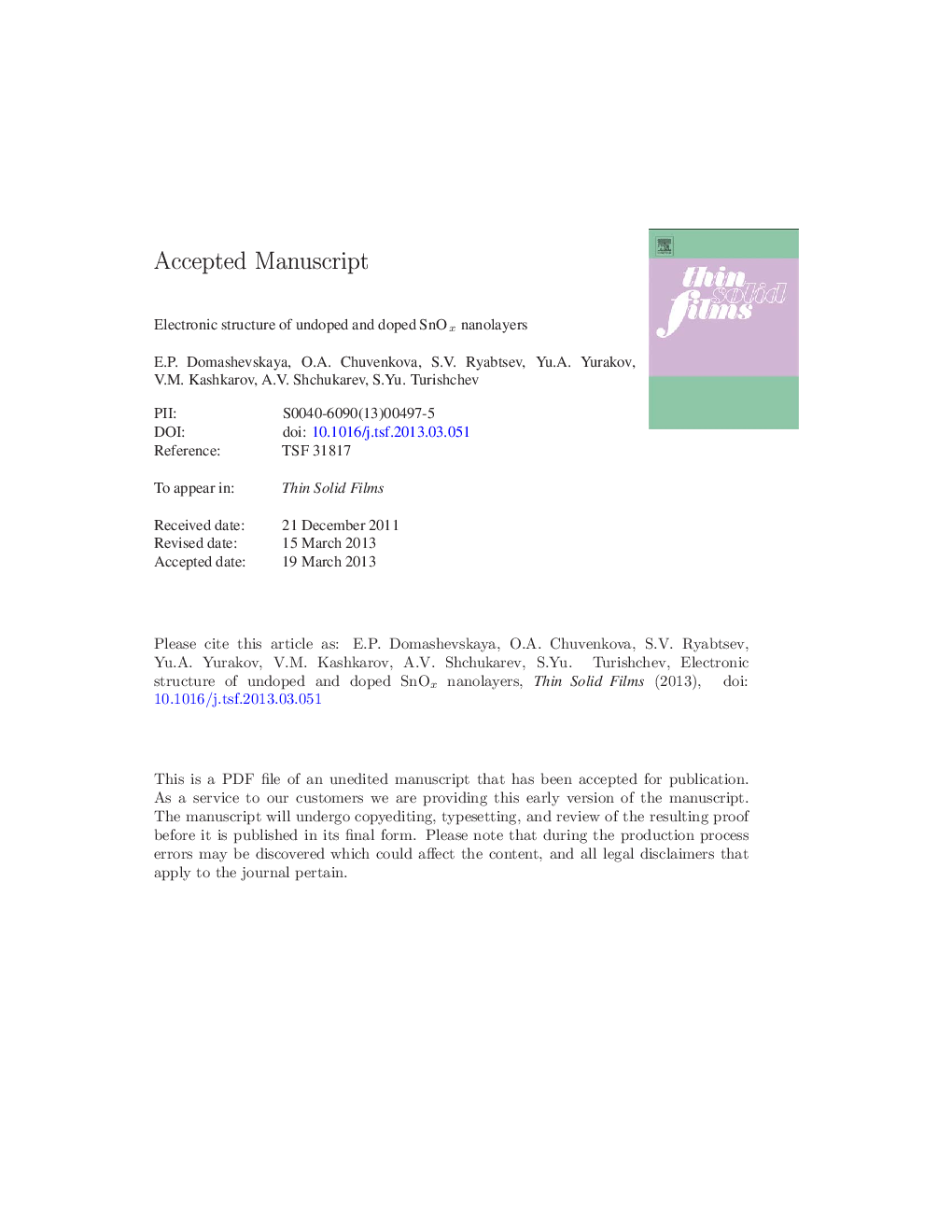| Article ID | Journal | Published Year | Pages | File Type |
|---|---|---|---|---|
| 8036649 | Thin Solid Films | 2013 | 28 Pages |
Abstract
Results of electronic structure investigations for tin oxide nanolayers obtained by tin magnetron sputtering and their following oxidation in air at different temperatures are presented. Using X-ray photoelectron spectroscopy (XPS) and X-ray absorption near edge structure (XANES) spectroscopy techniques it was shown that at the 240 °С anneal a predominant phase in the sample surface layers is tin monoxide. With the annealing temperature increase up to 450 °C the phase composition corresponds to tin dioxide. Rather high sorption sensitivity for the samples oxidized at 450 °C was found. The compositional model of the gap structure based on XANES and XPS data matching for SnOx nanolayers revealed occurrence of the crossed transitions with the energy of ~ 3.7 eV in the presence of two phases: the SnO and the SnO2 or SnOx with vacancies. Under surface doping of SnO2 nanolayers with palladium PdO and PdO2 is observed where PdO is the most intensive component. O2 and H2 multiple alternate exposures resulted in the disappearance of palladium dioxide and PdO recovery to the metallic Pd. Under Pd bulk doping of nanolayers PdO and PdO2 were observed in the surface layers. In this case PdO2 was presented by two types of particles different in size, one of them having the greatest binding energy of Pd 3d5/2 (339.0 eV).
Related Topics
Physical Sciences and Engineering
Materials Science
Nanotechnology
Authors
E.P. Domashevskaya, O.A. Chuvenkova, S.V. Ryabtsev, Yu.A. Yurakov, V.M. Kashkarov, A.V. Shchukarev, S.Yu. Turishchev,
